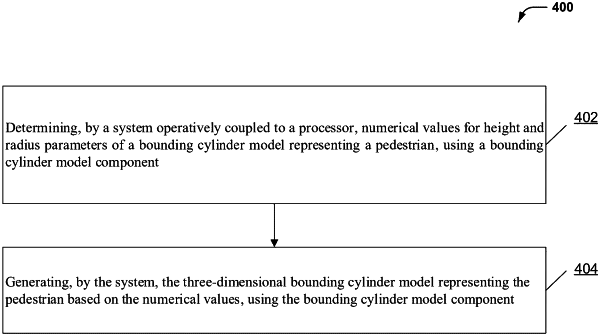| CPC G06V 20/64 (2022.01) [G06T 7/60 (2013.01); G06T 17/10 (2013.01); G06V 10/774 (2022.01); G06V 20/58 (2022.01); G06V 40/103 (2022.01); G06T 2207/30196 (2013.01); G06T 2207/30261 (2013.01)] | 20 Claims |

|
1. A system, comprising:
a memory that stores computer executable components; and
a processor that executes at least one of the computer-executable components that:
detects, using sensor data from an object detection sensor of a vehicle, a pedestrian;
determines, using a neural network and the sensor data:
an axis running perpendicular to a ground under the pedestrian and running vertically through a center of the pedestrian,
a height of the pedestrian from the ground to a highest portion of the pedestrian along the axis, and
a radius of the pedestrian from the axis to a portion of the pedestrian that is furthest horizontally from the axis; and
generates, using the neural network, a three-dimensional bounding cylinder model representing the pedestrian, wherein a height of the three-dimensional bounding cylinder model is equal to the height of the pedestrian, and wherein a radius of the three-dimensional bounding cylinder model is equal to the radius of the pedestrian.
|